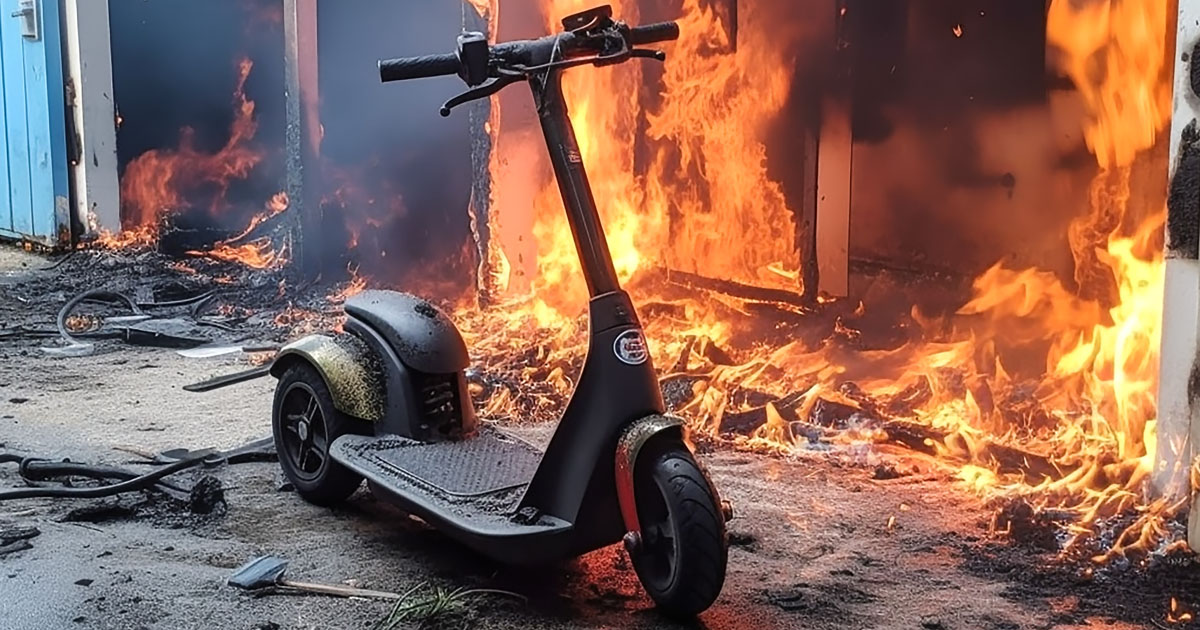The Potential Risks of E-Bike and E-Scooter Batteries
In recent years, the popularity of electric bikes (e-bikes) and electric scooters (e-scooters) has surged, offering a convenient and eco-friendly alternative to traditional bicycles and scooters. As more people embrace this mode of transportation, concerns about the safety of e-bike and e-scooter batteries have also emerged. This blog aims to shed light on the potential dangers associated with e-bike and e-scooter batteries, specifically the risk of explosions and fires. While the incidence of such events is relatively low, understanding the risks and adopting safety measures is crucial for riders to enjoy the benefits of e-bikes and e-scooters without compromising their safety.

Understanding the Concerns
E-bike and e-scooter batteries are typically lithium-ion batteries, known for their high energy density and efficiency. However, these batteries can pose risks if not handled or maintained properly. Reports of e-bike battery explosions and fires have raised concerns, prompting a closer examination of the issue.

Statistics in the UK
While incidents of e-bike and e-scooter battery-related accidents are relatively rare, it is essential to acknowledge that they do occur. In the UK, there have been documented cases of e-bike and e-scooter battery-related fires, causing injuries and, in some instances, fatalities. According to The Guardian’s news article back in May, at least 190 people in the UK have been injured by e-bike and e-scooter fires since 2020. Although the numbers are relatively low compared to other types of accidents, it is crucial to take these incidents seriously and proactively address safety concerns.

Preventing E-Bike and E-Scooter Battery Fires
Quality Assurance: Choose reputable brands and manufacturers. Opt for e-bikes or e-scooters with batteries from trusted manufacturers who adhere to safety standards and regulations. Investing in quality products can significantly reduce the risk of battery-related incidents.
Regular Maintenance: Inspect and maintain your e-bike or e-scooter regularly. Check the battery, wiring, and connections to ensure everything is in good condition. Regular maintenance can help identify potential issues before they escalate.
Avoid Extreme Conditions: Store and use your e-bike or e-scooter in moderate conditions. High temperatures can increase the risk of battery malfunctions. Avoid exposing your e-bike or e-scooter to extreme heat or cold, and store it in a cool, dry place.
Charge Responsibly: Follow manufacturer guidelines for charging. Overcharging or using non-compatible chargers can pose risks. Follow the manufacturer's guidelines for charging the battery, and avoid leaving it unattended during the charging process.
Replace Old Batteries with Brand New Official Batteries: Don't use outdated, damaged, or third-party batteries. Over time, batteries degrade, leading to potential hazards. Replace batteries that show signs of damage or reduced performance. Replacing the battery with a third-party one can be unsafe as they are usually built to a lower quality and are more susceptible to heating up during charging.
Fire Safety Measures: Be prepared for emergencies. Keep a fire extinguisher nearby when charging your e-bike or e-scooter and know how to use it. In the event of a fire, prioritise personal safety and call emergency services immediately.
While the dangers of e-bike and e-scooter batteries are not widespread, acknowledging the potential risks and taking proactive measures is essential for ensuring the safety of riders. By choosing reputable brands, conducting regular maintenance, and following safety guidelines, e-bike and e-scooter enthusiasts can enjoy the many benefits of this eco-friendly mode of transportation while minimising the likelihood of battery-related incidents. Awareness, responsibility, and adherence to safety measures are key elements in fostering a secure environment for the growing community of e-bike and e-scooter riders.
